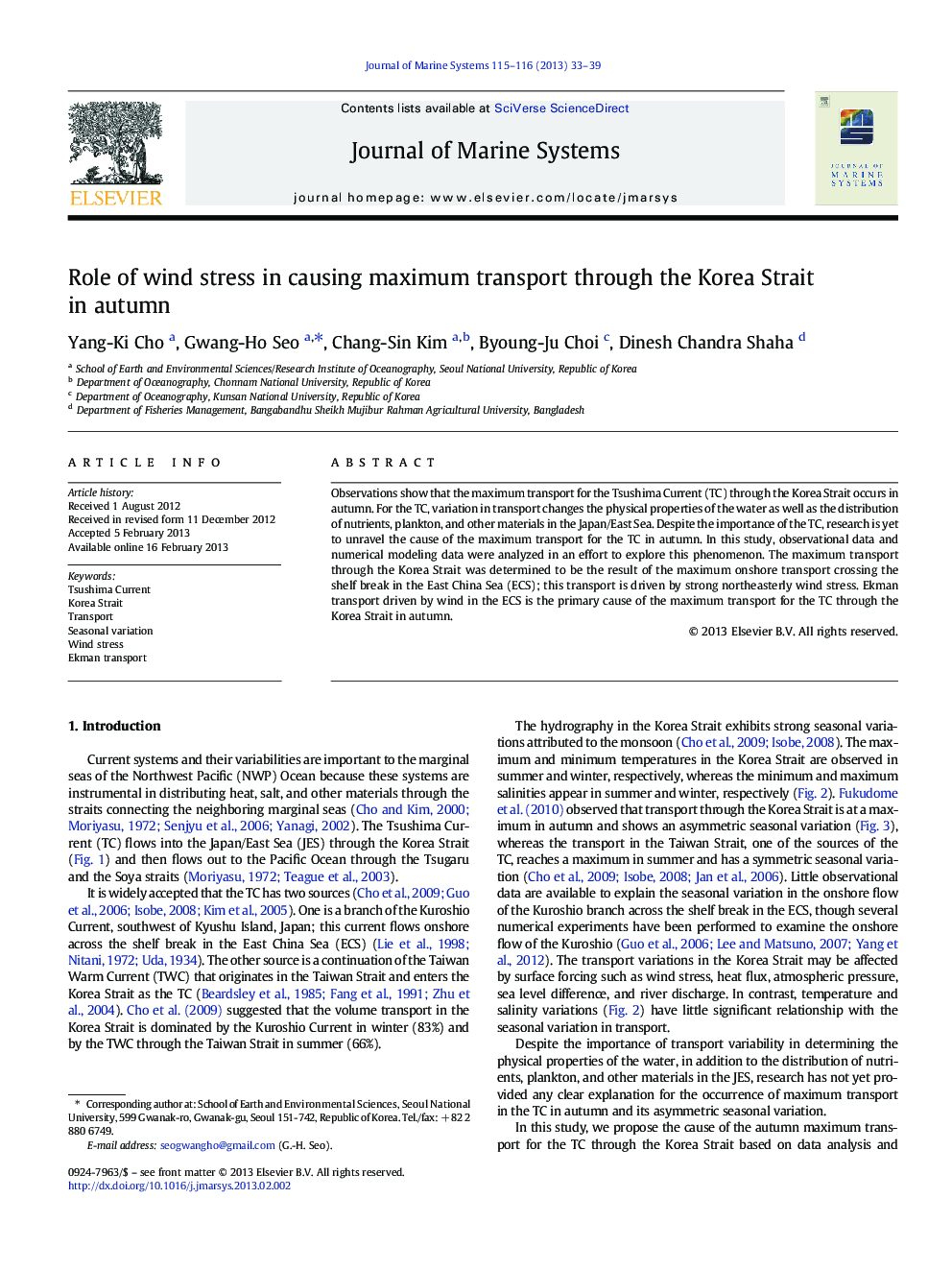| Article ID | Journal | Published Year | Pages | File Type |
|---|---|---|---|---|
| 4548117 | Journal of Marine Systems | 2013 | 7 Pages |
Observations show that the maximum transport for the Tsushima Current (TC) through the Korea Strait occurs in autumn. For the TC, variation in transport changes the physical properties of the water as well as the distribution of nutrients, plankton, and other materials in the Japan/East Sea. Despite the importance of the TC, research is yet to unravel the cause of the maximum transport for the TC in autumn. In this study, observational data and numerical modeling data were analyzed in an effort to explore this phenomenon. The maximum transport through the Korea Strait was determined to be the result of the maximum onshore transport crossing the shelf break in the East China Sea (ECS); this transport is driven by strong northeasterly wind stress. Ekman transport driven by wind in the ECS is the primary cause of the maximum transport for the TC through the Korea Strait in autumn.
► Maximum transport through the Korea Strait occurs in autumn. ► Onshore transport changes seasonally due to wind stress in the East China Sea. ► The wind stress is a primary factor causing maximum transport of the Korea Strait.
